What Is a Smart-Home Integrator?
For a reliable and easy-to-use home automation system, work with a professional integrator.
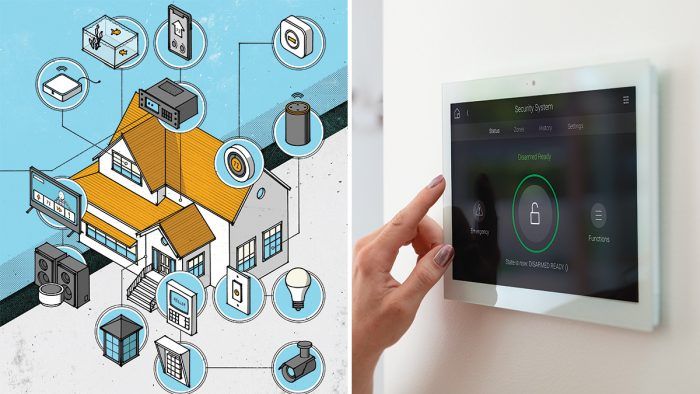
In the past decade, there has been an explosion of smart products and smart-home technology. From video doorbells to thermostats to lighting and audio systems, more and more of a home’s electronic components are capable of communicating with each other and with central controls. All sorts of devices are available on a mix-and-match basis, and in theory any homeowner can buy smart devices and assemble them into a home system that responds to commands, or carries out preprogrammed routines in response to timers or sensors.
But it takes more than a collection of smart devices to make a home truly smart. For a satisfying smart-home experience, you need some kind of central controller that integrates the various smart systems in the home into a coherent whole.
For people who like to tinker, it can be fun to buy an assortment of smart components and piece together a house that does tricks. But that approach requires time and energy, and the results can be glitchy and frustrating. If you want to make a hobby of fiddling with your home’s technology, the opportunity is certainly there. But if you’re a builder whose goal is to supply your custom-home clients with a smart home that just works, you’d be well advised to consider a more professional approach: working with a dedicated trade contractor who specializes in creating a fully functional smart-home experience.
These days, there’s a new category of subcontractor called “integrator.” Smart-home integrators take on the task of building a smart-home system that can meet a homeowner’s expectations for technology that works reliably, without the continual need for tweaking. Just as you hire an electrician to wire your homes, or an HVAC technician to design and install heating and cooling systems, you can hire an integrator to design and install the smart-home systems that take a house to the next level of technology.
For this story, I talked to a cross section of experienced professional integrators. Here’s what I learned.
The three big vendors
The smart-home industry is a dynamic market where a lot of technology companies come and go. But there is a stable side to the industry. Right now, at least three established companies are known as reliable vendors and partners in the home automation space: Control4, Crestron, and Savant.
All three of these big players are capable of providing a well-functioning smart-home system, but there are some differences among them. Savant has a slick, easy-to-use user interface. Control4’s system is compatible with a wide range of third-party products. Crestron, which has a big presence in commercial and institutional markets, is known for its performance on the high end, serving large and expensive custom homes.
But the three big players are each working to beef up their capabilities in areas that are known as their competitors’ strengths. So, for example, Crestron has developed Crestron Home, a simplified, scalable product line aimed at the residential market that features an easy-to-use interface. And Savant is developing interoperability with a wider range of third-party devices. Savant has also staked its own claim to the ultra–high end: In partnership with Las Vegas luxury-home builder Blue Heron, the company recently opened a marketing “experience center” that incorporates a million dollars’ worth of automation technology into a $25,000,000 model home.
The role of an integrator
So where does the integrator fit in? The big vendors don’t tend to deal directly with homeowners, or even with builders. Instead, they refer inquiries to their networks of integrators. The integrators like to get involved in the job early on. There’s no law that says an integrator can’t work with multiple vendors. In practice, however, most integrators pick one company’s systems to represent.
Scott Newnam runs Audio Advice, which in addition to operating two brick-and-mortar hi-fi and video stores in North Carolina is also the largest integrator in the Carolinas. “If it’s a really high-end home that’s being custom designed, usually the architect will bring the integrator in,” says Newnam. “And usually they have an expert integrator that they know is really good in their area that they’ll go to.”

“Custom builders also usually will have an integrator that they typically go to,” Newnam continues, “and they get them involved as soon as they can. The number one error that we see is when the integrator gets brought in too late.”
Builders should cultivate relationships with reputable integrators and bring the integrator into a project “as soon as it’s real,” says Newnam. “The builders that we work with throughout the Carolinas often call us before they’ve even won a job with a customer. They’ll come to us and say, ‘How would you think about lighting control for this house? Where will we put it? And where will we put a rack with some equipment in it? And are we going to hide all of the television equipment like Rokus and Apple TVs?’ We can have a conversation that will help them close the job, and we’ll work with them in mapping out adjustments to the home.”
One big reason to plan ahead is that a complicated smart home requires a lot of electronic equipment, and all that gear needs somewhere to live. Typically there’s an equipment rack that needs a place; this could be in the basement near the electrical panel. If there’s no basement, the equipment rack will need to be located in a closet.
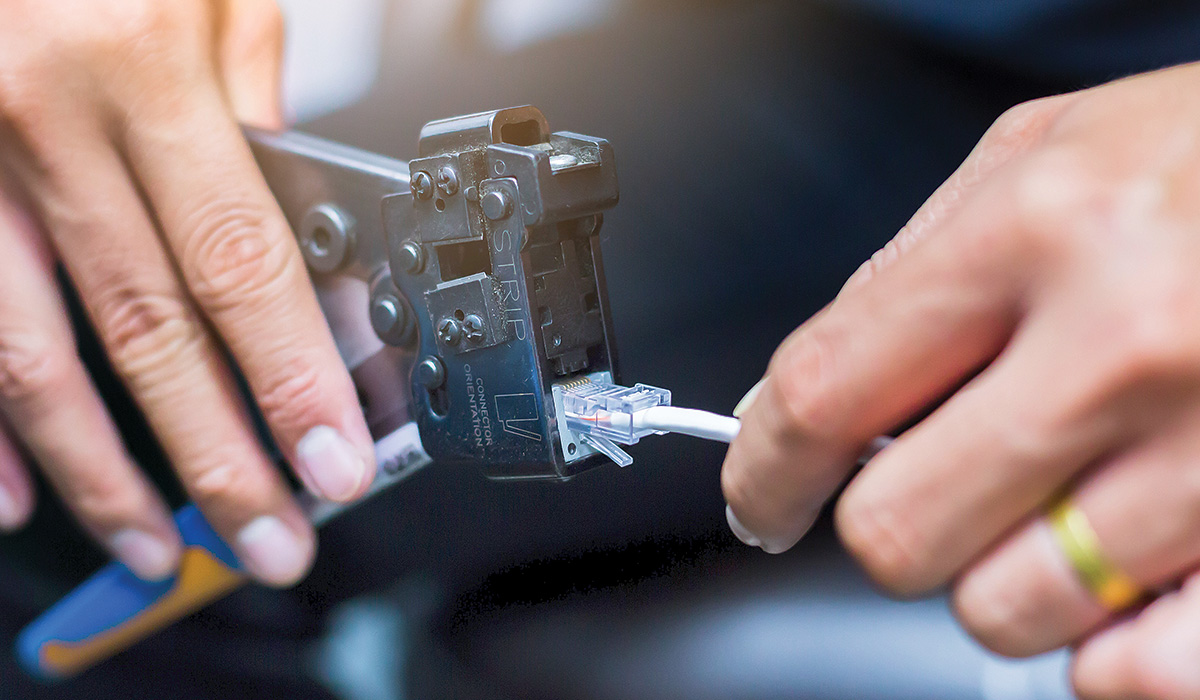
Integrators offer service after the homeowner moves in. That’s a key advantage, says Tyler Jones, Blue Heron’s CEO. “If the roof leaks or a window breaks or there’s something else wrong with the house, we can go out and evaluate it and fix it,” he explains. “We’re builders and designers, so we understand that. But when the home automation technology isn’t working or something needs to be updated or replaced, we can’t fix that. We don’t know how to go in and change the programming, so we are 100% reliant on our integrators.”
Integrators also educate the consumers about how to operate their homes, and they make adjustments after homeowners have lived in their homes for a while. “Eagle Sentry, our integrator, ends up having an ongoing relationship with our clients and continues to upgrade and fine-tune their systems well after we’ve completed a home,” says Jones.
A system of systems
At the heart of any full-on home automation system is a piece of electronics called a “processor.” (Savant calls its processor the “host.”) This is the brain of the system: a programmable box that is able to talk to all the other smart elements in the house.

So what systems can the processor control? The list is as long as the list of electronic technologies in the home. The most common application is control of lighting and motorized shades. Next may be security systems such as door locks, surveillance cameras, alarm systems, and security lights. But audio and video are also popular systems to control: Automated houses typically have room-by-room control of in-wall or in-ceiling speakers, as well as control of TVs in various locations throughout the house. Thermostat control is common. Smart video doorbells are popular. Outside, pools and spas, irrigation systems, landscape lighting, and outdoor music are commonly integrated into the home automation system.
The possibilities are virtually endless. Jerry Calder, head of builder sales for Control4’s parent company, Snap One, has seen a home automation system used to control giant fish tanks, a boat lift, a vineyard irrigation system, and a wine cellar (to keep track of which bottles had been removed and to order new bottles automatically). Michelle Guss, director of residential business development at Crestron, says, “Crestron really is only limited by a client’s imagination and budget.”
So what about that budget? Guss says, “The systems are very scalable. It can range from a few thousand dollars if you’re just doing some basic control in a small space. Or with the vast products that we manufacture, it can easily climb to the hundreds of thousands of dollars.”
Using an IntegratorA professionally designed home automation system can cost tens of thousands of dollars, but the hardware and software are frustration-free for the general contractor and for the client when the project is done. Pro integrators work with trusted equipment manufacturers, and the gear they use has more robust security than DIY systems to prevent home hackers and even corporate break-ins. The latter is increasingly common with more people working from home. |
Control4 integrator Adam Zell runs Boston Automations in metropolitan Boston. Currently, Zell’s company is working in The Preserve at Mill Pond, a 94-unit development of million-dollar-plus custom homes in Wrentham, Mass. Zell works with homeowners to customize their systems for their needs and wants. A simple system with one smart remote, a TV, and a robust home network might cost $10,000 to $15,000 including installation and programming, says Zell. A more comprehensive system that includes televisions, speakers, amplifiers, remote controls, networking equipment, etc., might retail for $45,000 (that includes integration with door locks and security lights and cameras). Smart lighting can add another $3000 to $7000, including installation, for dimmers, switches, keypads, and programming, Zell says.
Once the backbone of the system is in, it could expand to include garage doors, irrigation, landscape lighting, or any other component that comes with communication capabilities.
Prewiring sets up the infrastructure
In theory, everything in a smart home could run wirelessly. In practice, it’s far preferable to hardwire most parts of the system. The workhorse of smart-home wiring is Category 6 or “Cat6” cable, sometimes referred to simply as “network cable.”
Says Scott Newnam, “When one of my clients or a friend comes to me and says ‘Hey, I’ve got a $50,000 budget. What should I get?’ the first thing I tell them is ‘Get the infrastructure right. Wire the house correctly. Anywhere that you think you might need a wire, go ahead and put it there now.’
“And I know a lot of people say, ‘Oh, wireless is great, you can do anything wireless,’” Newnam continues. “But when you talk about the mission-critical functions of a home, anything that’s wired, the reliability is way higher than wireless. And so we essentially wire everything you can in a home.”
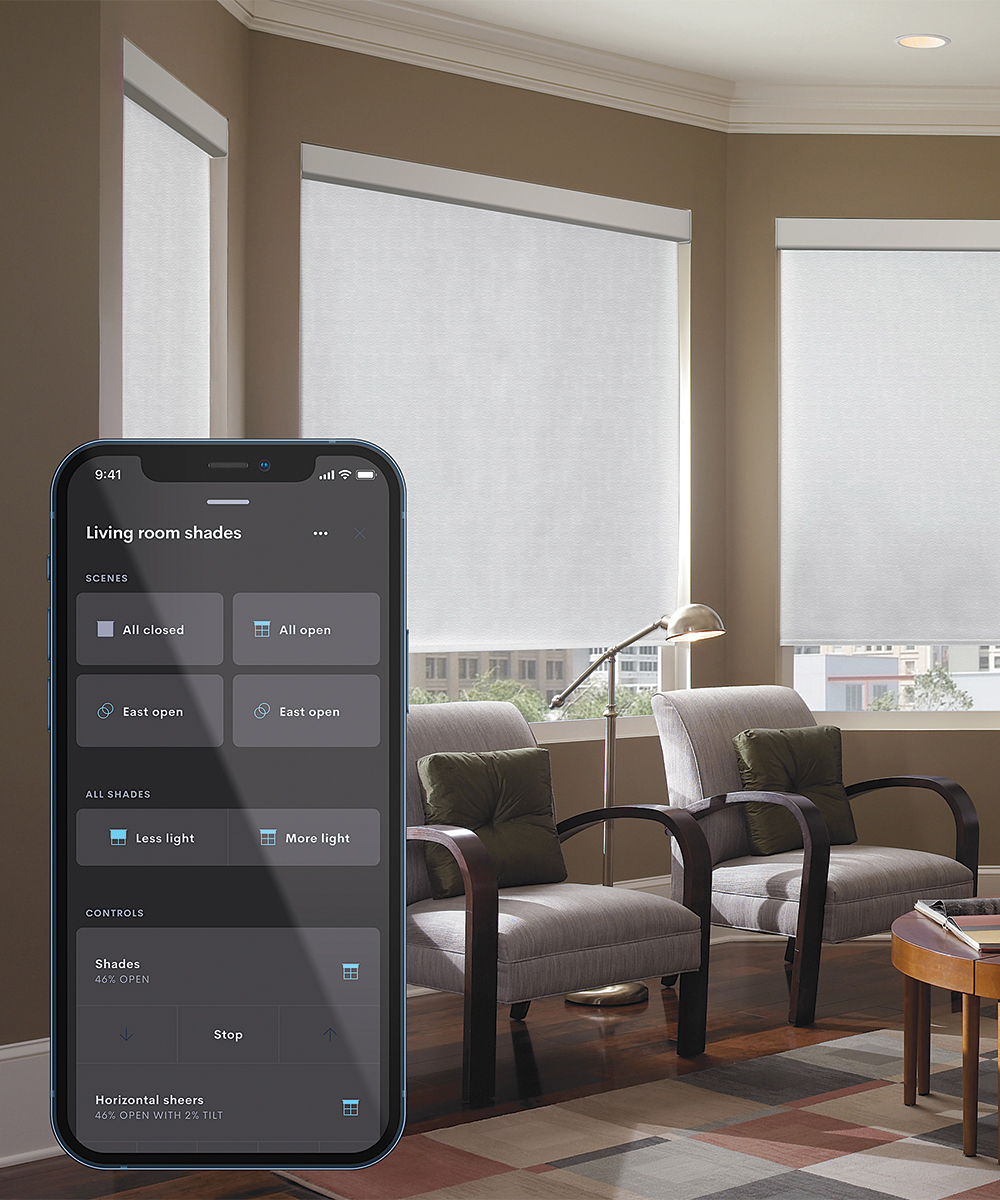
The top prewiring priority is the in-home network. While a wireless router from a big-box electronics store might be good enough for an apartment or small home, says Zell, a 3000-sq.-ft. home needs multiple wireless access points. These are WiFi antennas that are hardwired back to the router and located at various places in the house to provide strong, seamless WiFi coverage for laptops, tablets, or smartphones throughout the building. Ideally the access points should be placed in the ceiling, says Zell: “They give off their signal like an umbrella.” Access points aren’t buried behind the drywall or plaster, because that would degrade the signal, Zell adds, “so we do in-ceiling enclosures, which are plastic, and they have a plastic lid that goes over them. So if you look up on the ceiling, you see a white lid that might have a 1/8-in. reveal, if that.”
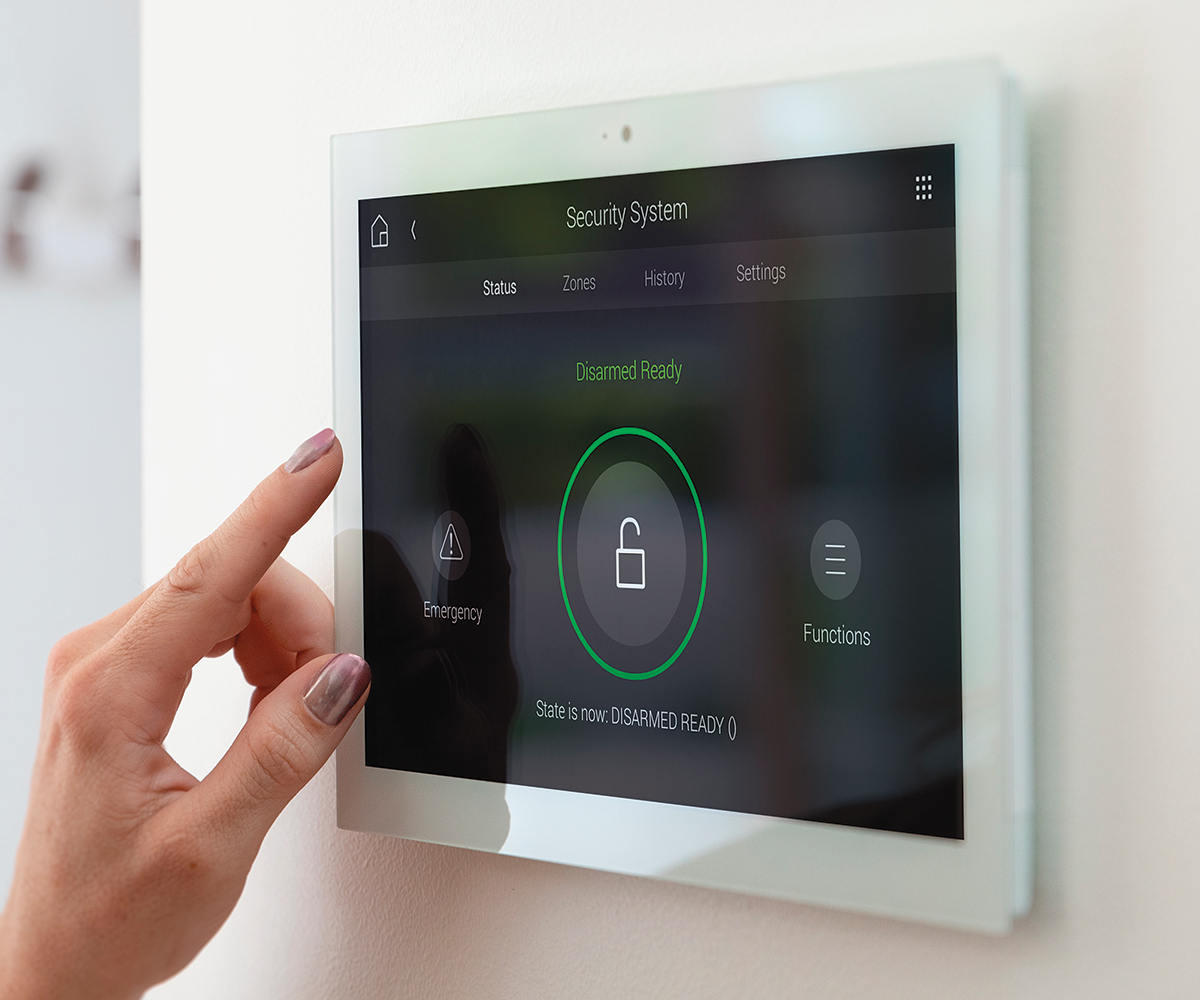
Televisions should also be hardwired into the system. That typically includes a Cat6 cable connecting the TV to the network for streaming content, another Cat6 cable for control, and in most cases a coaxial (“coax”) cable for connecting to cable TV boxes.
Prewiring for audio speakers is another priority. “We’re telling people to prewire for surround-sound speakers in a variety of rooms,” says Zell. He recommends running speaker wire to likely speaker locations even if the homeowner doesn’t want to install the actual speakers right away. Coming back later to run wire is prohibitively expensive, he says, while the up-front cost of a few runs of wire just in case is affordable.
When it comes to security and surveillance, there are a lot of wireless solutions on the market. Security sensors on windows and doors are typically wireless, but the keypads that control the systems tend to be wired. So it’s a good idea to run Cat6 to the keypad locations. Many surveillance cameras are also wireless, but many use hardwiring, so it’s good insurance to run Cat6 to camera locations. And if you run extra Cat6 wires, the homeowners have the option to add more cameras later if they aren’t satisfied with the coverage.
Besides these top categories, there’s a grab bag of possibilities that vary from one home to the next. You may want to prewire a fireplace. Many video doorbells are hardwired. Battery-powered shades with wireless controls are quite common, but it may be better to hardwire shades, especially if they’re located high on a wall so that it takes a ladder to change the batteries.
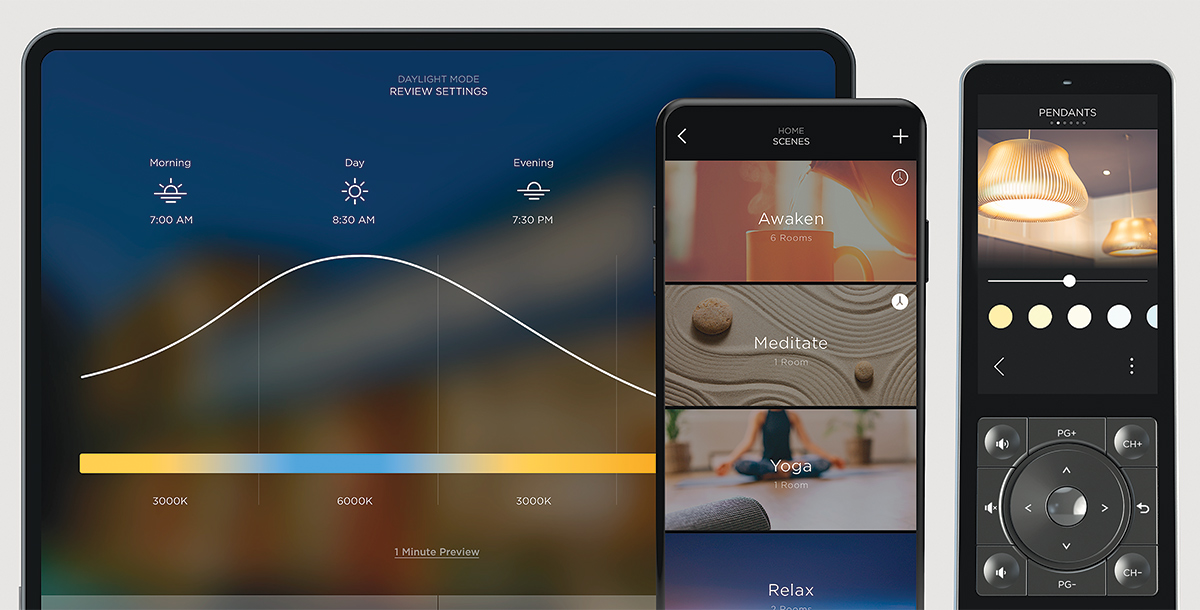
All these wires run back to a central location: the equipment rack. A typical equipment rack contains the processor and an assortment of other electronic components. “You are always going to have a modem to provide the internet for the house,” says Zell. “There will be a router to control all the internet traffic, and probably a separate firewall for security. Then you have a PoE (power over ethernet) switch to provide power to various devices. So if you have WiFi access points, those get powered by the switch. Touchscreens also get powered by the switch. And you have surge protection and power conditioning, with 12 or 24 outlets or whatever you need. Also, we put in amplification for distributed audio. If you have surround-sound TV in the living room, we’ll put the audio-video receiver in the rack. Then you have video sources such as cable boxes, Apple TVs, Rokus, etc. If you have subwoofers in the walls, you’ll have an amplifier per subwoofer. And if you have security cameras, you’ll have a network video recorder (NVR).”
The wireless element
Although prewiring is crucial, most modern smart homes have at least some wireless functionality. Typically, integrators turn to wireless solutions where hardwired methods are impractical or costly. “An example is door locks,” says Michael Oh, a Savant integrator who runs TSP Smart Spaces in Cambridge, Mass. “They usually use some sort of wireless protocol because it’s impossible in most situations to run a wire to the lock. You have to use wireless and battery power.”
There are two common wireless protocols for home automation: Zigbee and Z-Wave. Zigbee operates in the same frequency band as WiFi, while Z-Wave operates at a lower frequency band. Both solutions work by forming a “mesh network”—devices communicate with other nearby devices, and they route signals from the central processor to the targeted device based on a device’s electronic address.Zigbee and Z-Wave both come with limitations. Zigbee signals may interfere with WiFi signals on a network (and vice versa), while the lower-frequency Z-Wave signal has limited bandwidth, restricting it to relatively simple data commands.
Lighting: “panelized” vs. “wireless”
In a state-of-the-art smart home, lights are integrated into the home-control system. Using a smartphone, a wall keypad, or even a voice command, users can turn whole sets of lights on or off, dim or brighten the lights, or select from various preprogrammed lighting “scenes” that coordinate area lighting, task lighting, and accent lighting (more about scenes below).
There are two main ways to wire up the lights for this functionality. In “wireless” setups (which aren’t actually fully wireless), the lights are wired conventionally: Power goes from the source to the switch, and from the switch to the luminaire. But the conventional switch is replaced with a smart switch—usually a dimmer—that communicates wirelessly with the home’s processor. The processor takes input from the control source (the phone, keypad, etc.), and gives commands to the smart switches to adjust the lights.
“Panelized” lighting setups, which are more common in high-end homes with lots of lighting loads, are a little different. The lights are wired directly via home runs to a subpanel near the main electrical panel, bypassing the wall controls. In the lighting panel, the circuits connect to smart switches that are controlled by the main processor. As with the wireless setups, however, the home’s users control the lighting from a keypad, from a phone, or perhaps by using voice commands.
The user interface
The whole point of a smart home is to give residents control over their living environment. To that end, smart-home systems entail a whole suite of control interfaces. Each of the big three vendors has a smartphone and tablet app that can control all of the home’s functionality. But the user is not limited to the phone: Typically, lights and audio are controllable from keypads on the wall. Besides that, touchscreens (which can be wall-mounted or freestanding) offer control of all of the home’s systems. And handheld remotes control not just the home’s TVs but all of the other functions of the smarthome system.
Says Scott Newnam, “Using iPads and iPhones is generally not sufficient to control a luxury home that’s got true integration. You need universal remotes and some dedicated control panels.”
“Using a smartphone to control your TV is not a great experience,” says Newnam. “When we put in a Control4 system, there is a fixed remote control in someone’s house. You don’t have to swipe to turn on your phone, or look at it for Face ID, and open an app—and then while you’re in the app, if someone texts you, or the phone rings—see, it’s not working anymore, right? None of that has to happen. There’s a remote sitting there, you click ‘on,’ it turns on the audio, it turns on the television, and you control it from the fixed remote.”
Programming the system
The full power of the smart home goes far beyond simple control of one element like a TV or a light. The real point of home automation is in the ability to orchestrate coordinated control of multiple aspects of a home at once, by creating scenes. When you wake up in the morning, for example, a “good morning” command might raise the blinds, turn on some lights, play morning music, turn up the heat, and even start the coffee maker. A “home from work” command could lower the blinds, turn on lights, and cue restful evening music. An “entertain” command might dim lights to 50% and play party music. A “good night” command could shut the whole house down: lock doors, arm the security system, close garage doors, turn down the heat, and shut off all the lights. In large houses with lots of lights, the convenience of one-button control when you leave the house or go to bed can be significant.
To begin with, setting up these scenes in a new house is the job of the integrator. Michael Oh says, “We usually do the first pass at all of those scenes. We’ll make an educated guess that this is your evening scene, this is your daytime scene. Then as the homeowner moves in and we get their feedback, we’ll start making changes and adjust it. Usually it takes a few weeks.
“Somebody might live in their new home and for the first couple of weeks they’ve got a little label next to the keypad that tells which button does what,” says Oh. “And they may change it around: ‘Let’s change this button to control the shades, and this button to control the lights.’ We can do all that via software, once we’ve got the basic setup. Then a few weeks later, we’ll order the keypad buttons that they want and install them, so it’s all nice and clean.
“But it’s all software-programmable,” Oh explains. “That’s the beauty of the real smart-home architecture: If somebody says ‘I have a party coming on Friday, and I’d love to do this new scene,’ I can come in remotely and create a new scene for them and put it on their phone or put it on a keypad. That’s sort of the magic of what we do.”
“If you’re buying this system, you’re paying for an integrator to make it right,” says Adam Zell. “Where people end up shooting themselves in the foot is they go a little overboard, and they’ve done so much custom programming that it becomes a nightmare. And then they’re calling and paying a ton of money every time to make changes. Really, the best thing is to create very simple scenes like ‘hello,’ ‘goodbye,’ ‘goodnight,’ ‘entertain,’ ‘relax,’ ‘watch a movie.’ Keep it to five or six simple scenes. And then you’re good.”
Increasingly, however, vendor software enables homeowners to modify scenes or even to create their own from scratch. Crestron Home’s Bryan Celli demonstrated his company’s software’s capability during a virtual tour of Crestron’s New York showroom in August. Running the software on an iPad, the homeowner can create and name a new scene; set lights, music, HVAC, security settings, or other elements; and save the scene with a single keystroke to phones and to handheld remotes and touchscreens around the house.
The DIY Option
A professionally designed and built smart-home system comes with a hefty price tag: The processor alone will set you back around $1000. If you want the challenge, you can get into home automation for less: Buy a smart-home “hub” for a couple hundred dollars, invest in some smart components, and piece together a system on your own. You can start small and build up. Unlike a professionally installed system, a DIY smart home will rely exclusively on wireless connectivity.
Smart-home hubs come in many flavors, and a shopper’s guide for them is beyond the scope of this article. Here is just a sampling of the many hubs you can buy: Amazon’s Echo (4th Generation) is a smart speaker with a built-in hub that offers Zigbee integration and Alexa voice control; Aeotec’s Smart Home Hub works as a Zigbee and Z-Wave gateway; Hubitat’s Elevation Home Automation Hub also offers Zigbee and Z-Wave compatibility and works without a live internet connection.

Now you’ll need some smart devices—Lutron Serena motorized shades, Lutron or Hue smart lightbulbs, a Nest thermostat, a Ring video doorbell, or just some smart wall plugs. You’ll want to choose carefully: Your devices need to be compatible with your hub.Once you have your hub and you’ve installed some smart devices, the next job is to get the hub to recognize and control the devices. Step one is to download and run the software that comes with the device, and get connected to your WiFi. Then you can download and use the software that comes with your hub to identify your devices and connect them to the hub.To operate your smart home, you’re going to need voice control via Google Home or Amazon Alexa. If you’re using a Google hub or an Amazon Echo hub, voice control comes built in. For a third-party hub like the Hubitat Elevation, you need to go through the process of enabling Google or Alexa using the hub’s app and the Google Home or Amazon Alexa app.
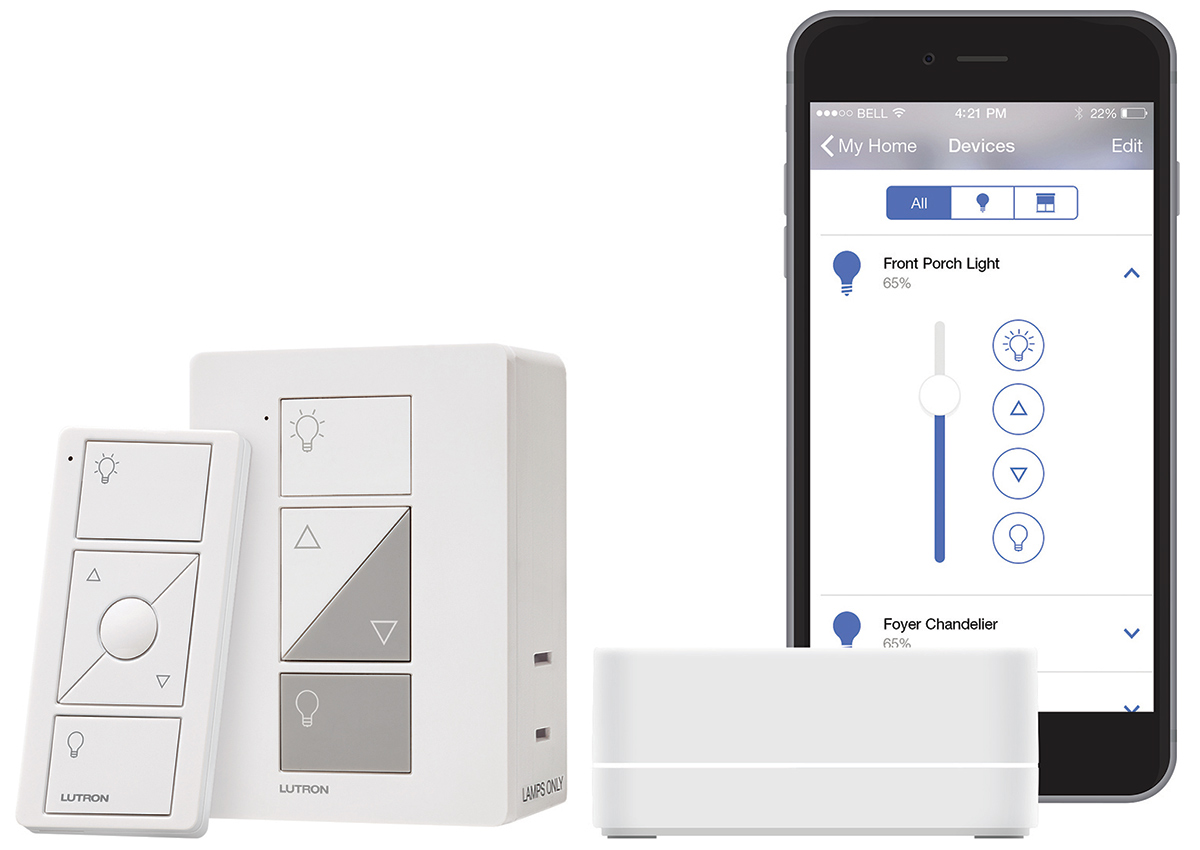
– Ted Cushman is a solar advisor with ReVision Energy in northern New England. Photos, except where noted: courtesy of the manufacturers.
Photos: courtesy of the manufacturers.
RELATED STORIES





